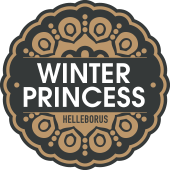Care tips
Helleborus is also known as Christmas rose or Sneezewort. There are as many as 20 different species of Hellebores, of which there are evergreen varieties and deciduous varieties. The plants are poisonous, so keep that in mind if you cut off a flower or leaves. Depending on the species, the plant flowers from December to April. So it is one of the winter flowering plants. Helleborus likes to stay where it is planted.
Most Helleborus species are found in the Balkans. Two species are native to Mediterranean islands: Helleborus argutifolius in Corsica and Sardinia, and Helleborus lividus on the Balearic Islands. Two other species are native to Asia: Helleborus vesicarius in Asia Minor (southern Turkey and northern Syria) and Helleborus thibetanus in China..

Winter-hardy
If the Helleborus is in the open ground, it is winter-hardy to around -20°C. A prerequisite is that the plant is not in a draught; it likes a sheltered position. If the plant is exposed to too much wind or is placed in a draught, the flowers can be affected. If the Helleborus is in a pot, it is better to put it inside during severe frost, but not warmer than 10°C.

Location
The plant likes semi-shade, but can tolerate more sun as long as the soil does not dry out. The soil should preferably be moist, but not too wet, i.e. well-drained. Furthermore, it prefers calcareous, fertile soil, with plenty of humus. The plant prefers a place sheltered from the wind.

Leaf and flowers
In winter, when the flowers become visible, you can cut away some of the leaves to show off the flowers better. In early June, it is wise to cut away unsightly leaves from the plant. The new leaves can often already be seen in the heart of the plant.
At the end of May, the flowers can be removed to promote flowering for the coming year. If you leave the flowers on the plant, seeds will be formed. New seedlings can grow from the seed. These will not be true to type, and so the flowers may be a different colour from the first plant. Incidentally, it takes a few years before a seedling starts bearing flowers.

Fertilising
In early spring and autumn, you can fertilise the Helleborus with organic manure, such as cow manure. An organic mulch layer also benefits the plant.

Consumption
Our Hellebores are unfit for consumption. The plants are poisonous.

Damage
Helleborus can suffer from aphids and slugs. Get information from, for example, a garden centre to control unwanted pests. Black spots on the leaf? This may indicate leaf spot disease. Remove all diseased leaves and throw them in the organic waste bin. Are you experiencing a lot of leaf spot disease? Get advice from, for example, a garden centre on the best way to protect the plant.




